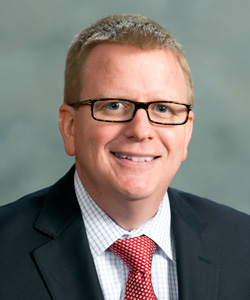We reclaim the power of nonviolent love
Matthew 5:38–42
Submitted by Rev. Dr. Daniel J. Ott
“You have heard that it was said, ‘An eye for an eye and a tooth for a tooth.’ But I say to you,
Do not resist an evildoer. But if anyone strikes you on the right cheek, turn the other also;
and if anyone wants to sue you and take your coat, give your cloak as well.
Reflection: The passages in the second half of chapter five in Matthew have often been called “antitheses.” Jesus states a well-known snippet of the law and follows it with a saying that seems to counter or replace that part of the law. But as Matthew tells it, Jesus begins this part of the sermon by saying, “I have come not to abolish the law, but to fulfill.” This means that the “But I say to you, turn the other cheek” does not abolish the “You have heard it said, ‘an eye for an eye.’” The idea of an eye for an eye is basic justice. But Jesus says that even though an eye for eye may be just, he wants his followers to turn the other cheek, to give both coat and cloak, and to go the extra mile.
The power of nonviolence is that it practices “turn the other cheek” precisely when an “eye for an eye” would be completely understandable. Who would have blamed the satyagrahis for defending themselves when they were clubbed down trying to enter the salt works? Who would have blamed the college students at the lunch counter for retaliating against cowardly sucker-punches? But these brave actors were operating on a higher moral plane. Greg Moses calls the use of nonviolence when violence would be justified a “shocking gap.”[1] The shocking gap breaks the cycle of violence. It introduces a new way of handling conflict. It models a whole new way of being in the world. An eye for an eye is fulfilled in turn the other cheek.
Action: To learn more about nonviolence, read This Is an Uprising: How Nonviolent Revolt Is Shaping the Twenty-First Century by Mark Engler and Paul Engler.
Prayer: “God, grant that we wage the struggle with dignity and discipline. May all who suffer oppression in this world reject the self-defeating method of retaliatory violence and choose the method that seeks to redeem.”[2] Martin Luther King, Jr.

Daniel J. Ott is an associate professor in the Department of Philosophy and Religious Studies at Monmouth College, Monmouth Illinois. His research interests include liberal theology in the twentieth century and Christian approaches to peace and nonviolence. His articles and review articles have appeared in Political Theology and the American Journal for Theology and Philosophy among others. He is co-author with Hannah Schell of Christian Thought in America: A Brief History (Fortress Press).
[1] Greg Moses, “A Shocking Gap Made Visible: King’s Pacifist Materialism and the Method of Noviolent Social Change” in The Liberatory Thought of Martin Luther King, Jr.: Critical Essays on the Philosopher King, edited by Robert E. Birt, (Lanham, Maryland: Lexington Books, 2012), p. 264.
[2] Martin Luther King, Jr., “Nonviolence and Racial Justice,” The Christian Century (6 February 1957):165-167.

This year’s Path of Peace reflections are based on the Five Affirmations to Guide the Peacemaking Witness of the Presbyterian Church (U.S.A.). Writers were recruited to help us explore the following affirmations as each week of A Season of Peace unfolds:
- Peacemaking is essential to our faith.
- We have sinned by participating in acts of violence.
- We reclaim the power of nonviolent love.
- We commit to the study and practice of nonviolence.
- We will practice boldly the things that make for peace.
Each author writes Monday–Friday, beginning with the first affirmation and ending with the fifth. The authors represent a variety of vocations and experiences in peacemaking efforts, and each week presents a new ‘voice’ to walk you through the affirmations. The weekend devotions, written by the editor, also reflect the five affirmations. Individuals and households are invited to make use of these daily reflections beginning on Sunday, September 3, and concluding on World Communion Sunday, October 1.